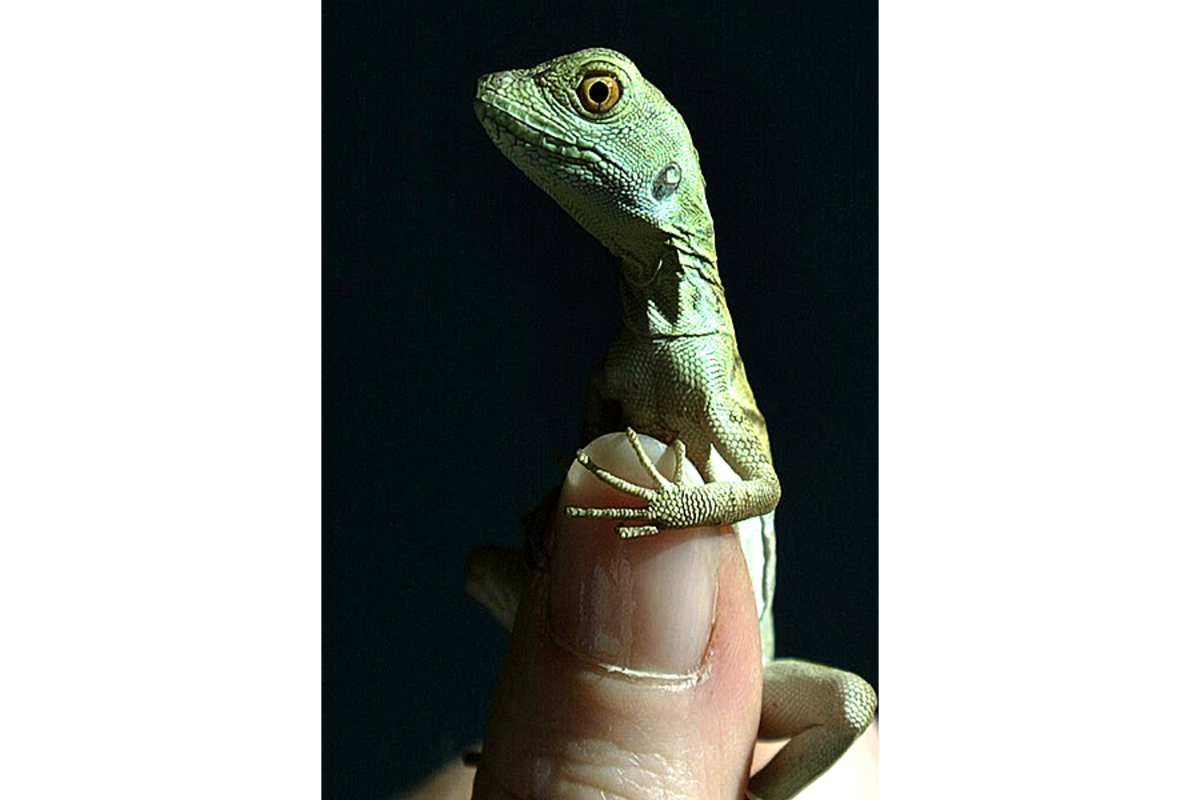Did lizard that walked on water once thrive in Wyoming?
Loading...
The ancient relative of a curious lizard known for walking on water may have darted around a tropical Wyoming.
Researchers hope that the two-foot-long lizard may help scientists understand how climate change may affect tropical species, Jack Conrad of American Museum of Natural History, who studied the fossil, .
"Given our current period of global climate fluctuation, looking to the fossil record offers an important opportunity to observe what is possible," said Dr. Conrad, "and may give us an idea of what to expect from our dynamic Earth."
Conrad about the fossil's similarity to modern iguanian lizards in the open source journal PLOS One on Wednesday.
The 48-million-year-old fossil – a skull with a toothy smile – was recovered from the Bridger Formation in Wyoming . Conrad says the fossil is the first description of a new species and may represent the earliest clear member of the iguanian lizard group, Corytophanidae, according to the statement.
Fossils of plants and other animals found in its deposits in the region suggest that the Wyoming climate was 48 million years ago than it is today, Conrad, who is an assistant professor of anatomy at the New York Institute of Technology College of Osteopathic Medicine, told LiveScience.
It is likely that the lizard moved southward as the climate in North America cooled, he added.
The best known modern corytophanid lizard is the basilisk lizard, a curious creature famous for being able to run across the surface of water. It is not clear whether the basilisk's ancestor shared the same ability.
The author suggests that the ancient lizard, which he named Basiliscus meaning "," was likely active during the day and spent a lot of time in trees. The teeth were suitable for eating snakes, lizards, fish, insects, and plants, and the fairly large cheekbone is an indication that the lizard may have consumed larger prey items as well.





